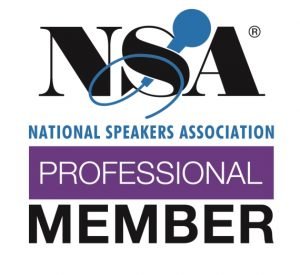You have safety signs posted everywhere. There are daily safety briefings and an annual mandatory on-line safety course.
And yet there are still accidents. Why?
There are two basic reasons.
- Team members are people and from time to time they will make mistakes.
- Team leaders are relying on the briefings and on-line courses instead of leading.
Obviously you can’t do much about the first one. Or can you?
Let’s concentrate on #2 and see if it can affect #1.
When I was a combat rescue crew member, we carefully briefed every flight, reviewing the day’s mission and the associated hazards. I’ve also led organizations with teams that handled dangerous explosives. Again, each operation was preceded by a thorough review of the operation and its attendant hazards. I don’t recall a mishap in either situation. But, those same people who so carefully considered the potential for accidents and injuries did manage to hurt themselves on seemingly innocuous tasks.
It seems when there is not an emphasis on safety, people aren’t as careful considering the hazards of the task. No amount of slick safety posters or repetitive briefings at the morning roll call seemed to affect this. But, when leaders are intent on keeping their team members safe, and develop a culture that encourages each member to consider the hazards in everything they do, there are fewer mishaps and the resultant injuries. That safe work environment is the leader’s responsibility.
- Take a proactive approach. Don’t rely on canned posters, briefings, and courses to be your safety program. Remember that repetition often breeds complacency.
- Know what your team is doing. Always be on the lookout for potential mishaps. This should be easy since you are regularly out and about, interacting with team members. Aren’t you?
- Encourage team members to identify where hazards exist and ways to mitigate them. One organization conducted an experiment, encouraging all members to submit anonymous reports of potential safety hazards. Since the reports were anonymous there was no fear of retribution, but supervisors were required to investigate. As a result, identified hazards increased and mishaps decreased.
- Remember that creating that safe environment does not mean eliminating all hazardous tasks. You can’t wrap your team in bubble wrap. It does mean constant vigilance and proactive efforts to be aware of the hazards and mitigate them as much as possible.
So, does good leadership help overcome the fact that team members are people who sometimes make mistakes? Yes it does. Your leadership responsibility is to develop a work environment that discourages complacency and encourages safe practices – all the time.
 Bob Mason is dedicated to leadership development. He works with companies to solve problems by helping supervisors and managers become more effective leaders leading more productive teams. He is a professional speaker and author of Don’t Worry, You Can Do This: What New Supervisors and Managers Need to Know About Leadership; The Art of Not Motivating: How Leaders Can Succeed by Understanding the True Nature of Motivation; Balancing the Generations: A Leader’s Guide to the Complex, Multi-Generational, 21st Century Workplace; and Planning to Excel: Strategic Planning That Works.
Bob Mason is dedicated to leadership development. He works with companies to solve problems by helping supervisors and managers become more effective leaders leading more productive teams. He is a professional speaker and author of Don’t Worry, You Can Do This: What New Supervisors and Managers Need to Know About Leadership; The Art of Not Motivating: How Leaders Can Succeed by Understanding the True Nature of Motivation; Balancing the Generations: A Leader’s Guide to the Complex, Multi-Generational, 21st Century Workplace; and Planning to Excel: Strategic Planning That Works.
A 30-year career in the U.S. Air Force exposed him to great leaders and leadership opportunities such as command of four squadrons, including the Air Force’s largest munitions squadron. He has studied leadership extensively, but more importantly has been there, working with real people, making hard decisions, and experiencing the results.
Contact Bob at Bob@BobMasonSpeaker.com or 505-453-5266




